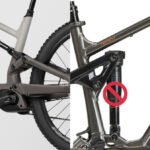My first ever bicycle, a Royce Union 3-speed, remains a vivid memory. It was also the last brand-new bike I ever purchased. Around 1967, or perhaps shortly after, as a nine or ten-year-old, I invested all my birthday and Christmas savings to acquire it for approximately $39. Like many others described, it was an affordable department store bicycle, clearly inspired by the popular English 3-speeds of the time. However, unlike the originals, the hub and shifter were not Sturmey-Archer but, as I recall, a 333 model. The gear shifter was a stick-shift elegantly positioned on the top tube. The handlebars were designed for comfortable, upright riding, reminiscent of the North Road style.
For me at that age, this Royce Union Bike was the epitome of beauty. Its glossy black frame, complemented by black fenders with white accents, white handlebars, slender whitewall tires, and white shifter and cables, alongside a black and white saddle, made it truly stand out. Previously, I had been riding my mother’s hand-me-down, a rusty, faded blue and gray Western Flyer that felt as heavy as a vintage car. The arrival of my Royce Union instantly elevated my status among neighborhood kids. They admiringly called it an “English racer,” which was about the extent of our collective bicycle knowledge. It became the most coveted bike on our block, until my closest friend soon after acquired a ten-speed model.
It’s easy to look back and dismiss these budget-friendly imports as inferior and poorly constructed. Yet, my Royce Union bike served me faithfully for many years, and it became my practical school in bicycle mechanics. Being a rather energetic rider, I wasn’t always gentle with it. After a few unavoidable collisions, the fenders started to show wear and tear. Inspired by the sleek look of the ten-speeds that became fashionable in the 70s, I removed them altogether. I lost count of the numerous times I mended punctured tubes or diligently scrubbed rust from the rims using a Brillo pad discreetly borrowed from the kitchen, hoping to avoid my mother’s notice.
While undeniably built for a smaller frame, the bike fit me perfectly during my pre-teen years. Even as I grew into my teens and technically outgrew it, I continued to ride it. I didn’t get my driver’s license until I finished high school at 17. Even then, access to a family car for personal use wasn’t always guaranteed. Despite commuting to university, I often relied on my trusty bike for getting around, especially at night.
Eventually, after finishing college, I retired my Royce Union bike from regular service. However, I still possess the Schwinn-approved speedometer I installed during my high school days. It proudly registers 2602 miles, and it’s worth noting that the bike itself had already seen some miles before the speedometer was added.
Despite its humble origins and modest price, that Royce Union bike was a reliable companion and served me well for at least a decade. It wasn’t just a bicycle; it was a significant part of my childhood and teenage years, filled with adventures and lessons learned.

